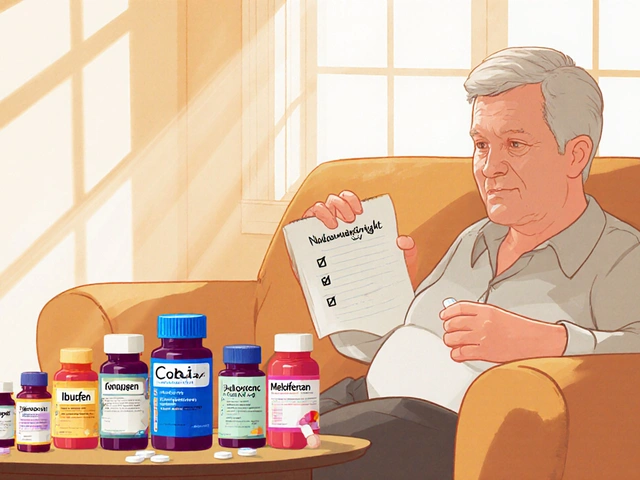Cobix (Celecoxib) vs Other NSAIDs: Detailed Comparison
October 16 2025Tacrolimus Comparison: What You Need to Know
When working with Tacrolimus, a calcineurin inhibitor used to prevent organ rejection and treat inflammatory skin disorders. Also known as FK-506, it plays a key role in controlling immune response and is often weighed against other drugs.
Key Factors in a Tacrolimus Comparison
Every Tacrolimus comparison boils down to three core triples: Tacrolimus affects immune activity; immune activity determines transplant success; and transplant success depends on drug safety and dosing. To make sense of those links, we look at related entities. Immunosuppressant, a class of drugs that dampen the body's defense mechanisms includes tacrolimus, cyclosporine, and sirolimus. Cyclosporine, another calcineurin inhibitor often paired against tacrolimus in studies shares a similar mechanism but differs in side‑effect profile and dosing frequency. Sirolimus, an mTOR inhibitor used for similar transplant protocols offers a non‑calcineurin route, which can be useful when patients experience tacrolimus‑related nephrotoxicity. Finally, Atopic Dermatitis, a chronic skin inflammation often treated topically with tacrolimus shows how the drug’s anti‑inflammatory properties cross over from organ transplant to dermatology.
When you compare tacrolimus to its peers, efficacy is the first yardstick. In kidney and liver transplants, tacrolimus consistently shows lower acute rejection rates than cyclosporine, which translates to better graft survival. However, tacrolimus can raise blood sugar and cause neuro‑toxicity, so clinicians monitor glucose and neurologic signs closely. Sirolimus, on the other hand, carries a risk of hyperlipidemia and delayed wound healing, making it a second‑line choice for many patients. For skin, the topical formulation of tacrolimus avoids the steroid‑induced thinning that plagues long‑term corticosteroid use, but it can cause a transient burning sensation that some patients find intolerable.
Cost and convenience also shape the comparison. Oral tacrolimus tablets are generally priced higher than generic cyclosporine capsules, yet the once‑daily dosing can improve adherence. Topical tacrolimus ointment tends to be pricier than over‑the‑counter steroids, but insurance coverage for chronic eczema often offsets the gap. Sirolimus requires careful trough‑level monitoring, adding clinic visits and lab fees, which can tip the cost balance in favor of tacrolimus for many transplant centers.
Putting it all together, the best choice depends on the clinical scenario, patient tolerance, and financial considerations. Below you’ll find articles that break down dosing strategies, side‑effect management, and head‑to‑head studies, giving you a full picture of how tacrolimus stacks up against its alternatives. Dive into the collection for practical tips and deeper analysis.
 19 Oct
19 Oct
Cyclosporine vs. Alternatives: Which Immunosuppressant Is Best?
A detailed comparison of cyclosporine with its main alternatives-tacrolimus, mycophenolate, azathioprine, sirolimus-covering mechanisms, side effects, costs and how to choose the right immunosuppressant.
Read More...



